Updated Feb 2024
In 2013, I (Beth) was lucky enough to do the elephant ‘safari’ with Wild Horizons. Now, updating this article in 2024, please be aware that this activity is now an elephant ‘encounter’, and it is not the same as it was then. Although I loved being able to ride on the back of an elephant, and the elephants were very well-treated, I fully support the discontinuation of elephant rides, because the increase in tourists is simply neither sustainable nor fair on the animals. I am very happy to now admire these elephants without touching them, as this is the more ethical pattern to follow going forward. Many of the elephants at the orphanage have since been released back into the wild, which is where they should be.
If you wish to book the current fantastic elephant activity at Wild Horizons Elephant Orphanage, please visit their website here.
Below is the article that I wrote about my experience in 2013…
Introducing Wild Horizons: activity operator
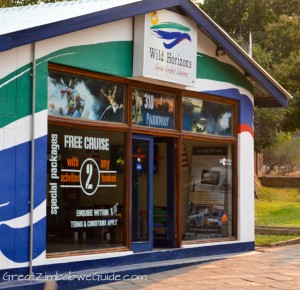 There are a number of activity operators in Victoria Falls offering activities such as white water rafting and game drives, but for me, Wild Horizons stands above the rest because of its clear focus on sustainable tourism. Wild Horizons was founded by people who have an evident passion for wildlife and the environment. They’re not looking to get a quick buck from gullible tourists – they’re committed to investing in conservation of the area. In addition, they’re closely linked to Victoria Falls Wildlife Trust (previously Wild Horizons Trust) which is involved in community outreach, wildlife research and conservation education. All of our activities in Victoria Falls in 2013 were booked through Wild Horizons.
There are a number of activity operators in Victoria Falls offering activities such as white water rafting and game drives, but for me, Wild Horizons stands above the rest because of its clear focus on sustainable tourism. Wild Horizons was founded by people who have an evident passion for wildlife and the environment. They’re not looking to get a quick buck from gullible tourists – they’re committed to investing in conservation of the area. In addition, they’re closely linked to Victoria Falls Wildlife Trust (previously Wild Horizons Trust) which is involved in community outreach, wildlife research and conservation education. All of our activities in Victoria Falls in 2013 were booked through Wild Horizons.
Ethical note: The elephants at this sanctuary have not been taken from their mothers or herds for the purposes of tourism. They have been rescued from abusive/captive/cull/orphaned situations. The elephants are not sold to other countries – in fact, many have been adopted in order to prevent them from being sold to other countries. They are not bred for tourism. They are not chained. The elephants did not have any wounds. The income generated supports their veterinary bills, the large area of land that they need, and to aid in the efforts to release the ones that they can back into the wild. In addition, the sanctuary invites local children to meet the elephants and teach them about the value of wildlife, encouraging conservation and education. You can read more here. More details at the bottom of this post.
It is imperative that you fully research all animal experiences to ensure that the animals are not being exploited. Wildlife belongs in the wild.
Nervous excitement for the Elephant Safari
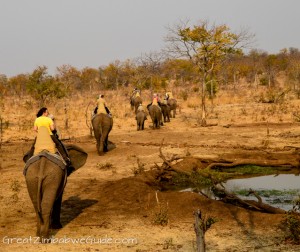 Our first big activity with Wild Horizons was the Elephant Safari: a ride through the bush on the back of a three-tonne African elephant. Now, I am not a thrill-seeker. I’ve ridden horses before and have also fallen off horses before, which was not fun. I can imagine that falling off a 10-foot elephant might be slightly different to falling off a horse. So I was slightly apprehensive about being atop a creature like this, especially as I’d gained a new respect for them seeing them wild and up close in the wild at Mana Pools. For whatever reason, I balked more at the thought of riding an elephant than walking with lions.
Our first big activity with Wild Horizons was the Elephant Safari: a ride through the bush on the back of a three-tonne African elephant. Now, I am not a thrill-seeker. I’ve ridden horses before and have also fallen off horses before, which was not fun. I can imagine that falling off a 10-foot elephant might be slightly different to falling off a horse. So I was slightly apprehensive about being atop a creature like this, especially as I’d gained a new respect for them seeing them wild and up close in the wild at Mana Pools. For whatever reason, I balked more at the thought of riding an elephant than walking with lions.
On the other hand, how many people can say that they’ve ridden an elephant? Not many. Plus, imagine the view you’d have from way up there. I remember going to a wildlife sanctuary when I was about 10 and feeding an adult elephant, and thinking how gentle it was, even though it was so big. I wanted to experience that paradoxical gentleness again. So I put aside my doubts and took the plunge (or the climb, in this case).
Meet and greet
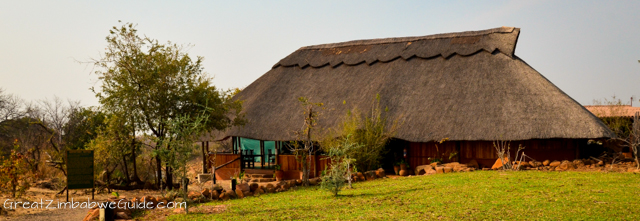
 We were picked up from our accommodation, the Victoria Falls Safari Lodge, by the Wild Horizons tour company minibus, as is standard for most activities in Victoria Falls, and after collecting guests from other lodges, were taken the short distance to Victoria Falls Wildlife Trust. The Trust is situated in the Victoria Falls National Park concession – raw bushland where the elephants can roam during their free time. It was a warm afternoon and we were greeted with a cold drink in a thatched rondavel. One of the elephant handlers gave us a safety talk and outlined the schedule for the afternoon, speaking with an easy confidence and reassuring smile.
We were picked up from our accommodation, the Victoria Falls Safari Lodge, by the Wild Horizons tour company minibus, as is standard for most activities in Victoria Falls, and after collecting guests from other lodges, were taken the short distance to Victoria Falls Wildlife Trust. The Trust is situated in the Victoria Falls National Park concession – raw bushland where the elephants can roam during their free time. It was a warm afternoon and we were greeted with a cold drink in a thatched rondavel. One of the elephant handlers gave us a safety talk and outlined the schedule for the afternoon, speaking with an easy confidence and reassuring smile.
The elephants are trained using positive reinforcement, and are so intelligent that they can learn over 22 commands in multiple languages – these elephants can understand English, Shona and Ndebele! In a recent study of these exact elephants at the Wild Horizons Sanctuary, researchers found that the elephants understand human body language, which indicates that they are cognitively more similar to humans than previously thought.
We went outside and were introduced to the herd of elephants. They ranged in size from towering males to endearing youngsters (who were still taller than me). Ben quickly announced that he wanted to ride the biggest one, which was double my height, and I felt slightly weak at the knees.
Each elephant is fitted with a massive saddle that has a seat, backrest and stirrups – quite well-equipped, really. Most of the elephants could carry a handler and two passengers, and I felt safer knowing that, unlike my horse ride experiences, I didn’t have to attempt to steer this beast. Two by two, we were allocated an elephant. We were introduced to Tendai, who, to my relief, was not the biggest elephant but was by no means the smallest either.
It was time to formally greet the elephants. They’re tactile, sociable animals that greet each other in the wild by touching each other with their trunks, so we were told to do the same. It made sense really – it’s like a handshake. I reached out and touched Tendai’s trunk. Her skin was hard and leathery, with deep wrinkles in it and long bristles of hair coming out from all angles. That first moment of touch was one of those special ones that is now permanently filed in my library of memories. Tendai’s trunk has more than 40 000 muscles in it (more than in our entire bodies), and she could have easily crushed my arm, yet she responded to my touch almost tenderly, as if she understood my relative fragility.
We were also introduced to Samuel, the guide who would be “driving” Tendai. We climbed up a staircase so that we were level with Tendai’s back and Samuel helped us into the sturdy-looking seats and adjusted our stirrups – and away we went.
Caravan of elephants
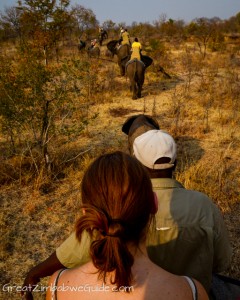 The elephants wandered through the game park in a line, stopping every now and then to grab branches from with their trunks, munching as they strolled along. Their single-file formation and humped backs reminded me of camels walking through the desert, casting strange shadows in the afternoon sun.
The elephants wandered through the game park in a line, stopping every now and then to grab branches from with their trunks, munching as they strolled along. Their single-file formation and humped backs reminded me of camels walking through the desert, casting strange shadows in the afternoon sun.
It was August, the dry season in Zimbabwe, which meant the landscape was ochre-coloured at this time of year. As you’d expect, the elevated view from the top of an elephant is a special one that gives a new perspective, being eye-line with the trees and above all the other animals.
Our guide, Samuel chatted to us during the journey – I remember with appreciation that he remembered each of our names and posed questions to us as well as reeling off interesting facts. “Beth, how are you doing?” he would ask, checking I was OK.
The handlers do use sticks with points on the end to steer the animals if they go off-course. I asked Samuel about it as he seemed to use the stick a lot, and he let me feel it – the point was actually smooth and blunt, and he assured me that elephants’ skin is much thicker than ours so they don’t feel any pain, it’s more of a communication tool. A tap on the head means to go forwards, and a stroke means to stop. Samuel was happy to answer our questions – probably the same ones that tourists ask every day, but if so, he didn’t give it away.
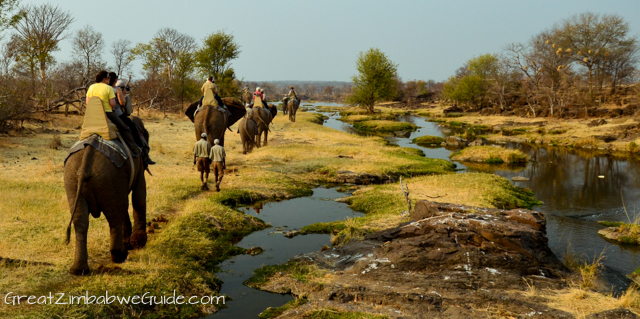
The walk takes about 45 minutes at a leisurely elephant pace. To make the scenery more varied, the route goes across the Masuwe River, which is picturesque and shallow, surrounded by greener grass and rocky ground. Our elephant, Tendai, was a mum and she kept her baby near her for the walk. My favourite moment was watching the baby eagerly stretching its little trunk to drink from the river.
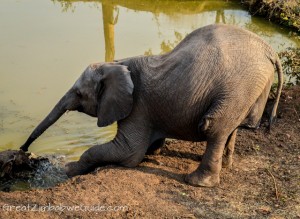 Tendai’s baby trotted around proudly, and came to suckle from Tendai every now and again. It was fantastic to hear them communicate with each other – the baby made excited clicking sounds when it suckled, and Tendai responded with a low rumble which shook her whole body and resonated through our seats. The baby loved picking up sticks from the ground and waving them in her trunk, showing off to everyone in sight.
Tendai’s baby trotted around proudly, and came to suckle from Tendai every now and again. It was fantastic to hear them communicate with each other – the baby made excited clicking sounds when it suckled, and Tendai responded with a low rumble which shook her whole body and resonated through our seats. The baby loved picking up sticks from the ground and waving them in her trunk, showing off to everyone in sight.
We were lucky enough to see some buffalo during the walk, which thankfully stayed at a safe distance. Although elephants are so large, they can still get spooked, and I didn’t want a first-hand experience of how fast an elephant can run. We also saw impala and bushbuck, and Samuel pointed out some beautiful birds around us, too. He told us interesting facts about the wildlife – like how weaver birds always build their nests on the west side of a tree (useful to remember if you happen to get lost in the African bush). We told him about our holiday so far – he thought we were crazy for swimming in Lake Kariba!
Saying thanks
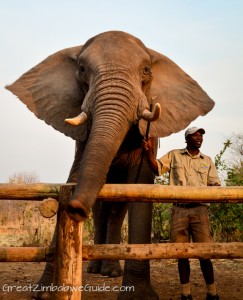 Back at the base, we descended from our elephants and said thank you to them. This was done in a way that’s universally understood – through the giving of food.
Back at the base, we descended from our elephants and said thank you to them. This was done in a way that’s universally understood – through the giving of food.
This part was really fun – we scooped up handfuls of food pellets from buckets, and chose our method of feeding the elephants. One method was to say to the elephant “Trunk up”, upon which the elephant would lift its trunk to its crown and open its mouth for you to furiously throw the pellets into the elephant’s open mouth and hope for the best. A group of warthogs scuffled on the floor eagerly clearing up after anyone with bad aim. The other way was for the elephant to make a ‘U’ shape with its trunk and for you to pour the pellets into its nostrils, for it to transfer to its mouth.
This was a wonderful way to interact with the elephants again, and to see them up-close on foot. When you’re riding them you can’t really feel the elephants themselves, and this feeding time balanced out the whole experience (and reminded me how big the elephants were).
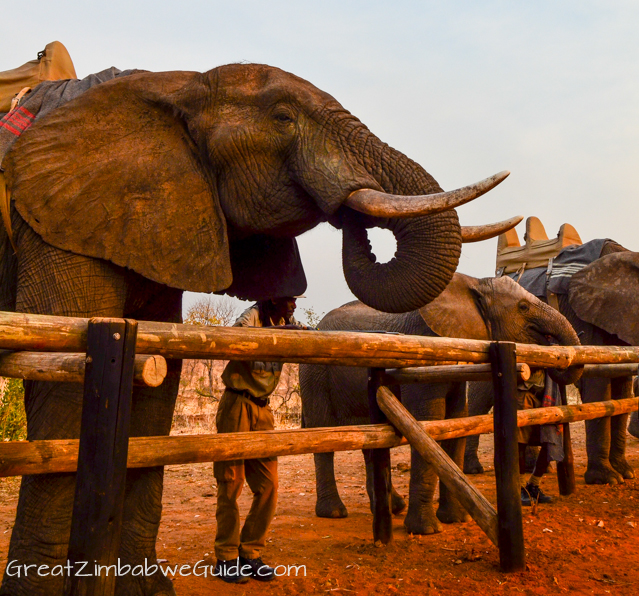 We had the opportunity to ‘thank’ our guides with a tip if we wanted to, and then we went into the rondavel to have a drink and snacks. After 45 minutes in the sun, the refreshment was much appreciated! The morning safari serves a full breakfast, but the food isn’t the reason for doing an activity like this. As we ate, we were shown a DVD that one of the guides on the ground had taken during the walk. The DVD was well edited and served as a nice re-cap of the experience, but I preferred my real-life memories to the video. We could also buy prints of our own elephant’s footprint which is a nice idea. The elephant safari is a “touristy” thing to do by nature and so a little bit of crassness is unavoidable.
We had the opportunity to ‘thank’ our guides with a tip if we wanted to, and then we went into the rondavel to have a drink and snacks. After 45 minutes in the sun, the refreshment was much appreciated! The morning safari serves a full breakfast, but the food isn’t the reason for doing an activity like this. As we ate, we were shown a DVD that one of the guides on the ground had taken during the walk. The DVD was well edited and served as a nice re-cap of the experience, but I preferred my real-life memories to the video. We could also buy prints of our own elephant’s footprint which is a nice idea. The elephant safari is a “touristy” thing to do by nature and so a little bit of crassness is unavoidable.
All the nervousness I’d initially felt was transformed to a sense of peace after a few minutes on the elephant. The staff were so professional, our guide so reassuring and our elephant so endearing that the experience was one that I will always remember.
Before we went back to our lodge we had a very special surprise which turned out to be the highlight of my time in Victoria Falls – more in the next post!
Practical information
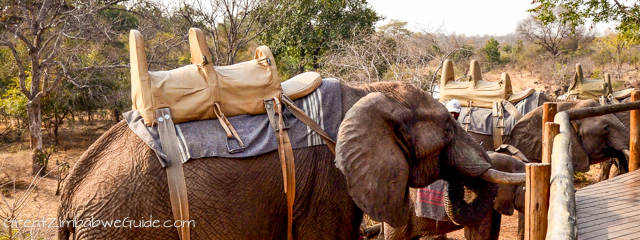
The elephant safari was well-organised and ran smoothly from start to finish, and I was very impressed with all of the staff. Here’s what to expect about other aspects of the activity:
- Game-viewing: Although this is called a safari, remember that the word “safari” in Swahili actually means “long journey”, so don’t automatically assume you’ll see scores of wildlife. The elephant ride takes place in a game park, so chances are you’ll see impala, waterbuck and other game, but this isn’t a given. Animal sightings in a true wilderness area are often based on chance and luck. Remember that you probably wouldn’t want to stumble across any of the bigger game such as lion – riding a frightened elephant is a much different to riding a peaceful elephant! If you want to see the big five, book a game drive or a Chobe day trip. If you want personal contact with the biggest land mammal on the planet, do the elephant ride!
- Cost: Activities in Victoria Falls certainly aren’t cheap, and the elephant ride is on the upper end of the scale ($140 at the time of writing). Think about how much it costs to raise an elephant and this might go some way towards justifying the expense, but also think about how much it costs to give an adult elephant a good lifestyle. One thing that elephants need is a lot of natural space, and this comes at a premium. If you see the elephant ride as a once-in-a-lifetime experience, and appreciate the conservation work that Wild Horizons does in the area, at least you know your money will be well spent.
- Time: I think 45 minutes on the top of an elephant and 15 minutes interacting with it is a decent chunk of time. The rest of your time during this activity is spent on transport, safety briefs, serving of food and drink, and watching a DVD of the ride. There are two safaris a day which means that the elephants themselves “work” for 2 hours a day, and then spend the rest of their time just being normal elephants, walking around the reserve with their herd. If the duration of the rides increased, Wild Horizons wouldn’t be a place that puts elephants’ needs first, which means it wouldn’t be a place that got my money.
- Guns: Some of the guiding team walk on the ground accompanying the elephant rides. They do carry guns as a necessary precautionary measure, but the guides are there to keep the elephants at ease just as much as for your own peace of mind. From your elevated view from the elephant’s back, you’ll see very little of them.
- We went on what was called the “Sunset safari” but it ended before sunset. We were picked up at 2.30 pm and were home by 5 pm, so the term “sunset” is a loose one.
- My advice would be to make the most of the experience of riding and interacting with an elephant, seeing the bush from this natural vantage point, and learning as much as you can from your guide.
- Further practical details about the elephant experience can be found here.
The question of ethics
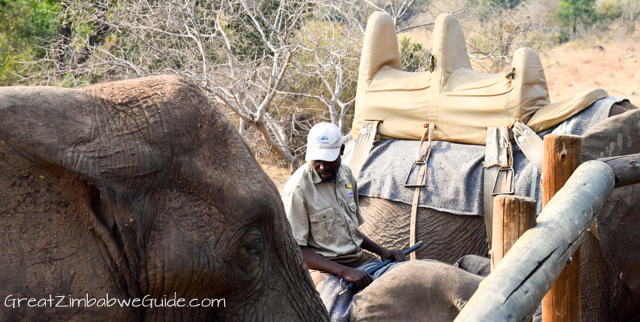
The topic of using wild animals in tourism is an important one, and I believe in always researching a place that keeps wild animals before handing over any cash – and that includes zoos in the West as well as animal facilities abroad. These days, when most companies have publicly-available websites, there’s no excuse.
In the 1980s there was a culling operation in Zimbabwe where huge numbers of adult elephants were killed but some calves were spared and sold to private famers to be trained. A model was built whereby the young elephants were trained by humans but allowed the freedom to live without cages. The hope was that these elephants would themselves play a role in conservation by educating people and, through interaction, give a deeper insight of their real value. Later down the line, Wild Horizons Trust decided to acquire some of these elephants and provide as good a life for them as possible in this difficult situation. These elephants get the social interaction that they need because they’re part of a herd at the Trust – a herd which overtly operates as a family. When a new orphaned elephant arrives, the females in the herd assume a mothering role, touching them and trying to suckle them. The elephants are trained using positive reinforcement, a far cry from methods of the past when they were forced to be vehicles of war. The Wild Horizons Mission Statement is a public affirmation not to sacrifice the welfare of the elephants for commercial gain. I can imagine a time in the future where the elephants that were initially trained in the 80s have died (elephants live for up to 50 years), and under the guidance of welfare-conscious organisations, elephant safaris like this will gradually die out too. For the time being, I recommend the Wild Horizons elephant safari rather than other ones in Victoria Falls, because Wild Horizons is publicly attuned to the bigger questions surrounding the issue.
Elephant stories
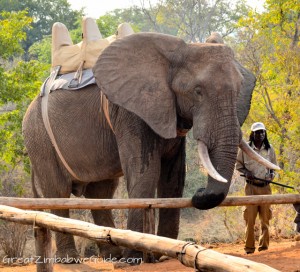 Each elephant has a history about how it arrived at the sanctuary. Some of the elephants are not trained, only staying at the sanctuary temporarily until they can be released into the wild.
Each elephant has a history about how it arrived at the sanctuary. Some of the elephants are not trained, only staying at the sanctuary temporarily until they can be released into the wild.
You only need to read the stories to see that this company truly has the elephants’ best interests at heart and that they take their responsibility very seriously. My favourite story is that of Doji: One day, the staff at the sanctuary found a wild elephant and calf interacting with the domestic herd at the sanctuary. Strangely, the wild adult elephant was a male – the wild calf’s mother was nowhere in sight. After a few moments of contact, the male elephant walked back into the bush, leaving the wild calf with the sanctuary herd. How weird is that – it’s as if the wild male knew that this was the best place for an orphaned elephant!
Here are links to some more of their stories: Makwa and Kennedy |Lulu |Rastas |Mashaba | Doji | Malasha.
To book this activity contact Wild Horizons. To read more about how Victoria Falls Wildlife Trust promotes conservation in southern Africa, click here.
This post is proudly sponsored by Wild Horizons. Sponsored posts are written with the understanding that the writer can express her opinions honestly and openly.
Wild Horizons is a ‘one-stop’ ground handling & activity provider based in Victoria Falls, Livingstone and Chobe. Wild Horizons offers a range of tours, transfers and activities including Rafting, Canoeing, Elephant Back Safaris, High Wire Activities, Lion Encounters, Helicopter Flips & our lodges: Imbabala Zambezi Safari Lodge and The Elephant Camp.




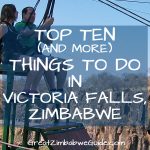
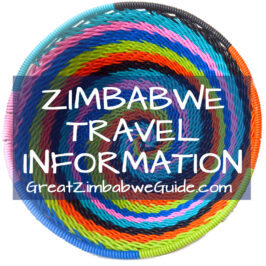
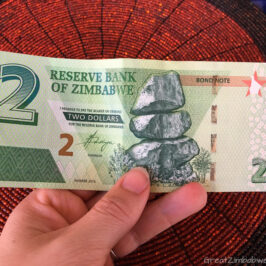
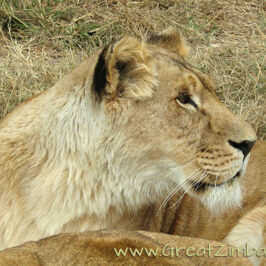
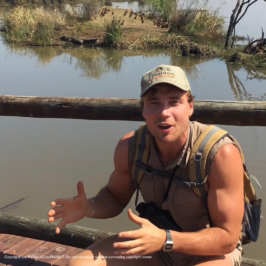
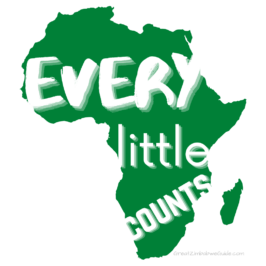
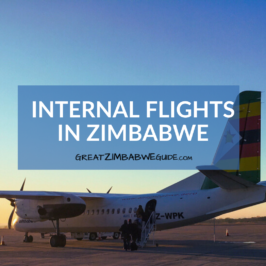

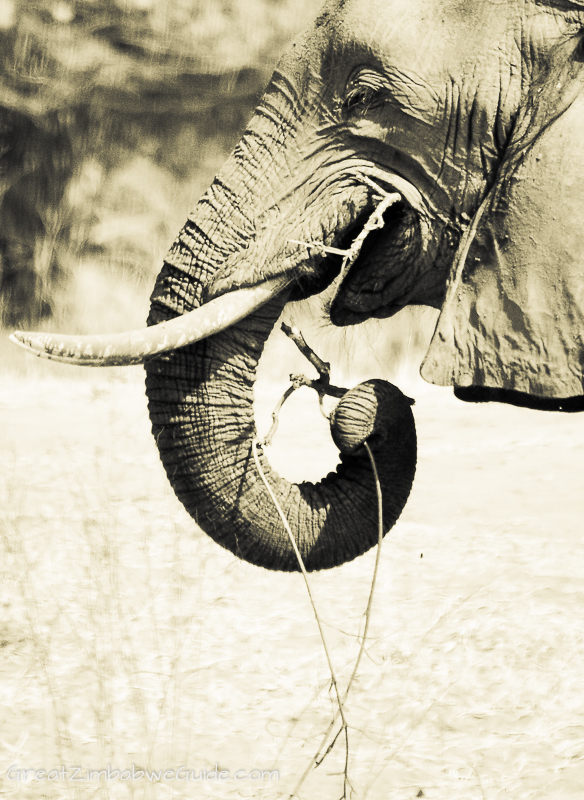
Leave a Reply